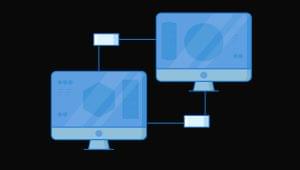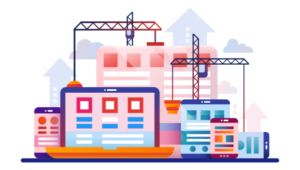Before you can design a winning Website you need a comprehensive design blueprint, and that begins with defining the purpose — as well as prioritizing the various objectives — of your online presence. Over the last few years, too many ebusinesses have launched with unfocused goals and, as a consequence, awkwardly-designed Websites that quickly falter.
Is the purpose of your site to brand and position your company online? Do you want to impress customers with fancy design and flash? Do you want Internet users to call you or visit your physical store? Or do you want to generate high revenue with shortest sales cycle possible — Ã la pure ecommerce?
Sadly, in executing ecommerce Web design, many of these goals have been conflated, misunderstood or poorly prioritized, in turn jeopardizing the overarching sales objectives of a business Website. In other words, when developing an ecommerce Web site, it’s customer acquisition (read: revenue stream) that should remain your top design priority. That means a sharp distinction needs to be drawn between the art of Web design and the art of designing a marketing-driven ecommerce Website.
Three Web Design Anchors for Smart eCommerce
To efficiently reach ecommerce goals, a marketing-driven Website is going to be your vehicle. That means planning your site — and orienting your Web design — around three guiding “design anchors.”
Design Anchor No. 1: Your “Value Proposition”
What’s your unique selling proposition (or USP)? What benefits do you offer that differentiate your business from others? What features or services do you offer that unequivocally build value while giving you a definitive edge over the competition? Distilling your unique value proposition and communicating it quickly and clearly on your Website is the first element of profitable ecommerce Web design.
Design Anchor No. 2: Your Target Audience
Understanding your market — and defining the needs of your target demographic — is an essential part of any business enterprise. Online it’s no different: design not for yourself, but for you target audience. Articulate meaningful benefits and situate your style and content in the context of your customers’ immediate needs and desires.
Banal Design is a good example of an online store that caters to a very specific market. In designing for this audience, the site could have easily obliterated ecommerce objectives with an elliptical layout and layers of overindulgent “cool”. But instead of “art pour le art”, this site quietly tailors design to its unique art world audience — while maintaining a lucid ecommerce agenda and a highly useable navigation and sales platform. At the same time, Banal Design also provides sufficient design elements to signal its credibility to a discerning target demographic in this niche market.
Design Anchor No. 3: Task-Analysis — Achieving a Defined Objective
Once you’re satisfied that your value proposition is being communicated to your target customer, you need a clear, focused sales process. Here, analyze the components of your sales channels, provide the necessary educational steps and requisite product information, and design a Website that optimizes action while eliminating distraction. Make it easy for customers to buy from you.
In the case of Digital Playroom, the modus operandi is simple: get the online customer on the 1-800 number to sell highly specialized music and studio gear. Here, design and content are oriented around the understanding that 99% of Digital Playroom customers are already intimately familiar with product specification and competitor pricing. By using a “List Price”, “Their Price”, “Call for Your Price” strategy, Digital Playroom orients visitors with sufficient content, then mobilizes customers to act, to communicate, to get a personalized one-on-one experience for products that have become Internet commodities. It even suggests the enticing prospect of old-world haggling.
Designing for the ‘One Second Principle’
On the Internet, you only have one second:
- One second to make a powerful impression.
- One second to establish your professionalism and start building trust.
- One second to generate the interest of your target audience.
- One second to begin downloading your value proposition and to initiate a compelling sales overture.
The three design guidelines above serve the one-second principle well and provide a blueprint for effective Website marketing and sales flow. Most online shoppers have little time to waste on brand-building Flash, sluggish multimedia plug-ins, overindulgent mission statements or content that serves no end. As recent research by Gartner and Jupiter Media Metrix suggests, convenience, usability and marketing clarity are even more important than price for online shoppers.
Given these survey results, successful Web design means having a tactical rationale for the placement of every graphic, every image and every word. And that means knowing your customers, anticipating their needs, and answering their questions before they’re even asked.
While more abstract issues like branding are not inconsequential online, the process of “building a brand” should come only as an after-impression, a coefficient of a powerful sales platform. Customer acquisition should remain the primary goal, and nothing — neither Flash nor corporate branding — should interfere with your marketing and sales agenda. Here, the best way to burn brand is to simply acquire a customer base: provide a righteous ecommerce experience and customers will remember you — even in a commodity driven market.
Does that mean that design and aesthetics are not important? No, it only means that form should serve function on ecommerce Websites, not the other way around. Art rarely serves utility. In fact, authentic art usually struggles to subvert it. That’s why art, by itself, won’t sell your products online.
Jane Pepperin is the Webmaster and Marketing Coordinator at Early-Pregnancy-Tests.com





